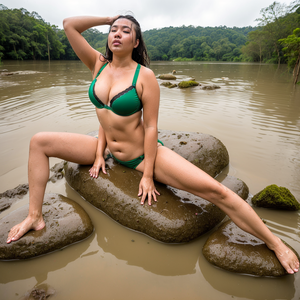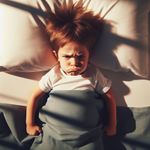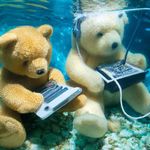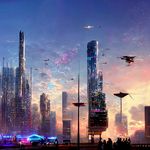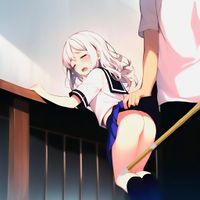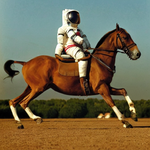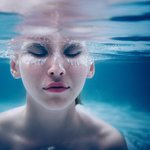Artificial intelligence art
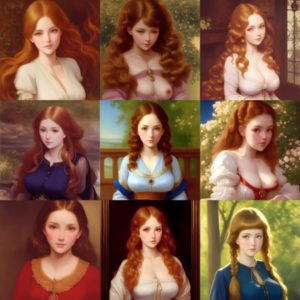
Artificial intelligence art, also called AI art for short or AI-generated art, refers to any artwork created through the use of artificial intelligence.
There are many mechanisms for creating AI art. Among those that have become popular in 2021 and 2022 are text-to-image programs that create artwork based only, or mainly, on textual prompts. Image-to-image technologies build on top of that by using an input image as a source to generate output images. For example, the software can modify a given image, or only masked areas inside a given image (inpainting), or expand an image beyond its original dimensions (outpainting), based on a textual prompt and the visual information from the input image.
Artificial intelligence art is distinct from rendered art, which is also computer-generated. In rendered art, a human artist creates a 3D model of a scene, and a computer program renders an image from this input. In AI art, the computer program creates the image without any 3D model, only based on the AI's training regarding thousands or millions of 2D images and the corresponding keywords.
AI art can look photorealistic, but also like paintings, drawings, or any other art style. AI art can easily mimic the style of famous artists, and also mix and combine artistic styles.
All legal ascpects regarding art also apply to AI art. For example, AI art can infringe company rights regarding copyrighted characters, personality rights of existing people, child pornography laws, etc.
Common issues
Things that AIs often have difficulties with:
- Human faces, hands and feet
- Human anatomy (see the image on the right for several examples of flawed anatomy)
- Posing characters as the user wants them to be posed
- Images featuring two or more characters who look completely different from another
- Uncommon environments
- Uncommon objects
- Uncommon poses
- Uncommon camera angles
- Uncommon ways to wear clothes (e.g. pants down, skirt up)
- Things that would require a 3D model and ray-tracing, such as precise shadows or mirror reflections. Hovever, AIs can create "rough" shadows and "rough" reflections surprisingly well: see also the image on the right.
Erotic AI-generated art
There is a great market potential for erotic AI-generated art.
Most producers of AI image generation software, so far, took efforts to make their product unsuitable to generate erotic art. They did this by excluding NSFW images from the sets that are used to train the AI, so that it effectively "has no concept" of erotic images, and in large parts not even a concept of nudity. Some also block certain keywords from the user-entered text prompts. Some have terms of use that prohibit the creation of adult artwork, and ban users who try to.
However, there are exceptions of AI software that can be used to create nudity and adult imagery, both in practice and legally, such as NovelAI and Stable Diffusion, and specialized AI software for NSFW images such as Pornpen.ai (see below). In some AI software, users can train the AI on their own sets of images. If the training images are of a specific genre or subject matter, the trained AI will produce similar output.
Stable Diffusion's ControlNet, img2img and inpainting features can be used to change given SFW images into NSFW versions, or to change features of an NSFW image (such as clothes, breasts, genitals, faces, genders, age) to one's preferences. It can also be used to uncensor images by replacing blurred-out by uncensored contents.
AI-generated spanking art
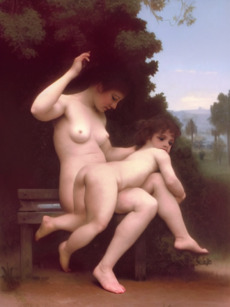
Artists who have created AI-generated spanking art include AIxcavator, Akame, Akiru, AKSK, BlissteredBySister, CarthagFall, Cosal, espec22, FullMoonSpanking, Kenny_sp, Micha, NAI, Oshirin, Red Swallow, Spankart and TheMailman.
Many of them use elaborate methods that go far beyond a simple "prompt in, image out" in order to achieve a satisfying result. For more about Spankart's method which uses a combination of txt2img, image editing, inpainting and outpainting, see Spanking art with Stable Diffusion.
A relatively simple method is to generate characters with bare bottoms and then add some redness and/or marks to the butt to turn the image into a post-spanking scene. Or to just pose the character such that it suggests a spanking or related punishment. An example of this is Has been taken.
There are also artists who create spanking scenes first in 3D software as rendered art and then use an AI to retouch the images for greater realism or a more artistic look. An example of this is SCSP.
See also: Spanking in painting.
Examples of AI art software
Adobe Firefly
Adobe Firefly, launched in March 2023, is an AI image generator by Adobe. It is a software product to buy and can not be used for free. It is heavily censored to create only SFW images: any images of nudity are banned and blocked.
Bing Chat's Image Creator
Microsoft Bing Chat is an artificial intelligence chatbot developed by Microsoft and released in 2023. It also has an Image Creator that can create AI art based on a text prompt. It supports over a hundred languages.
DALL-E
DALL-E is one of the first text-to-image models to capture widespread public attention. It runs on a server and creates artwork based on textual prompts. DALL-E requires registering an account and can generate imagery in multiple styles, including photorealistic imagery, paintings, and emoji. The software's name is a portmanteau of the names of animated robot Pixar character WALL-E and the Spanish surrealist artist Salvador Dalí. The software was published in January 2021.
A successor version DALL-E 2 was published in April 2022. DALL-E 2's training data was filtered to remove violent and sexual imagery.
Craiyon
Craiyon (formerly named DALL-E mini) is a simpler version of the DALL-E AI model that was trained with fewer data. It attracted substantial media attention in mid-2022 after its release due to its capacity for producing humorous imagery. Craiyon can be used via an ad-heavy website or an app, without registration.
Craiyon has noteable difficulties rendering faces and human bodies, which tend to look disfigured.
Imagen
Imagen is a text-to-image AI generator by Google.
Midjourney
Users create artwork with Midjourney using bot commands (text-to-image) on a shared Discord (chat) server. Everybody sees everybody else's created artwork on the shared server, and also what text input was used to create it. Midjourney uses a freemium business model, with a limited free tier and paid tiers that offer faster access, greater capacity, and additional features. It is an open beta software since July 2022. Midjourney is able to produce anatomically correct figures, beautiful lighting, finely detailed images of high visual and artistic quality.
In each execution of an "imagine" text prompt, Midjourney will return four newly created images in 60 seconds. The user can also ask Midjourney to improve, or “upscale,” the visual quality with new variations on the same idea.
NightCafe
NightCafe Studio or NightCafe Creator is a text-to-image AI generator that is mostly used, it seems, to create natural scenes and artwork with a surrealistic touch. NightCafe is an Australian business headquartered in Cairns.
NovelAI
NovelAI is an online cloud-based, SaaS model, paid subscription service for AI-assisted storywriting and text-to-image synthesis.
Its image synthesis features are very adept of producing close impressions of anime characters, including lolicon and shotacon imagery.
Pornpen.ai
Pornpen.ai generates "adult imagery" (erotic images, not really porn) via AI algorithms. The user can influence the results only via buttons. Textual prompts are not possible.
Stable Diffusion
 Main article: Stable Diffusion
Main article: Stable Diffusion
Stable Diffusion is different from other AI image generation software in that it is open source. Its default model was trained on 2 billion images taken from the Internet, including from personal blogs and amateur-art sites like Flickr and DeviantArt. The final training put an emphasis on images that human evaluators had categorized as aesthetically pleasing. There are also other Stable Diffusion models that were trained on other sets of images. For example, Waifu Diffusion was additionally trained on 680.000 images from Danbooru, a repository of high-quality anime-style art and doujinshi, resulting in a stronger bias towards anime style.
Stable Diffusion is highly modular. Varying with the user interface implementations, it can support features such as:
- txt2img: Creates an output image from a textual prompt without any input image.
- Strength setting: Controls how little or how great the software takes creative liberties.
- Emphasis: This allows the user to emphasize parts of a text prompt to make the software put greater weight on these parts.
- Negative prompts: This allows the user to specify prompts which the model should avoid during image generation, such as "disfigured, bad art, deformed, poorly drawn, extra limbs".
- img2img: Creates an output image from a textual prompt and an input image. The user can, for example, start with a coarse sketch and Stable Diffusion will modify this image according to the prompt.
- Inpainting: The user can mask a part of an image and Stable Diffusion fills in the masked part. This is done according to the prompt, matching the style and contents of the rest of the input image.
- Outpainting: Stable Diffusion extends an input image beyond its original dimensions. This is done according to the prompt, matching the style and contents of the rest of the input image.
- Loopback: A generated image is used as a new input image, creating a variation that is strongly tied to the previous image.
Stable Diffusion is notably more permissive in the types of content users may generate, such as violent or sexually explicit imagery, in comparison to similar machine learning image synthesis products from other companies.
There are various user interfaces and exchangeable components for Stable Diffusion. Since it is open source, users create their own tweaks and variants. There are cloud-based interfaces to Stable Diffusion, but Stable Diffusion can also be downloaded, installed and run on most consumer hardware. A GPU with 6 GB or more is recommended, although it is also possible to run Stable Diffusion, much more slowly, on a CPU only.
starryai
WOMBO Dream
Dream (or "Dream by WOMBO") is a text-to-image AI generator by the same company that created the AI-powered lip sync app WOMBO. Dream allows a textual prompt, the selection of an art style from a list, and optionally an input image. Dream can be used via a website or an app.
External links
Images on Commons:
- Category:DALL-E on Wikimedia Commons
- Category:Dream.ai on Wikimedia Commons (WOMBO Dream)
- Category:Midjourney on Wikimedia Commons
- Category:NovelAI on Wikimedia Commons
- Category:Stable Diffusion on Wikimedia Commons
Images on Pixiv:
- Artworks labeled AIイラスト (AI-generated illustration) on Pixiv
- Artwork labeled NovelAI on Pixiv
- Artwork labeled StableDiffusion on Pixiv
- Artwork labeled WaifuDiffusion on Pixiv
Chat rooms • What links here • Copyright info • Contact information • Category:Root
